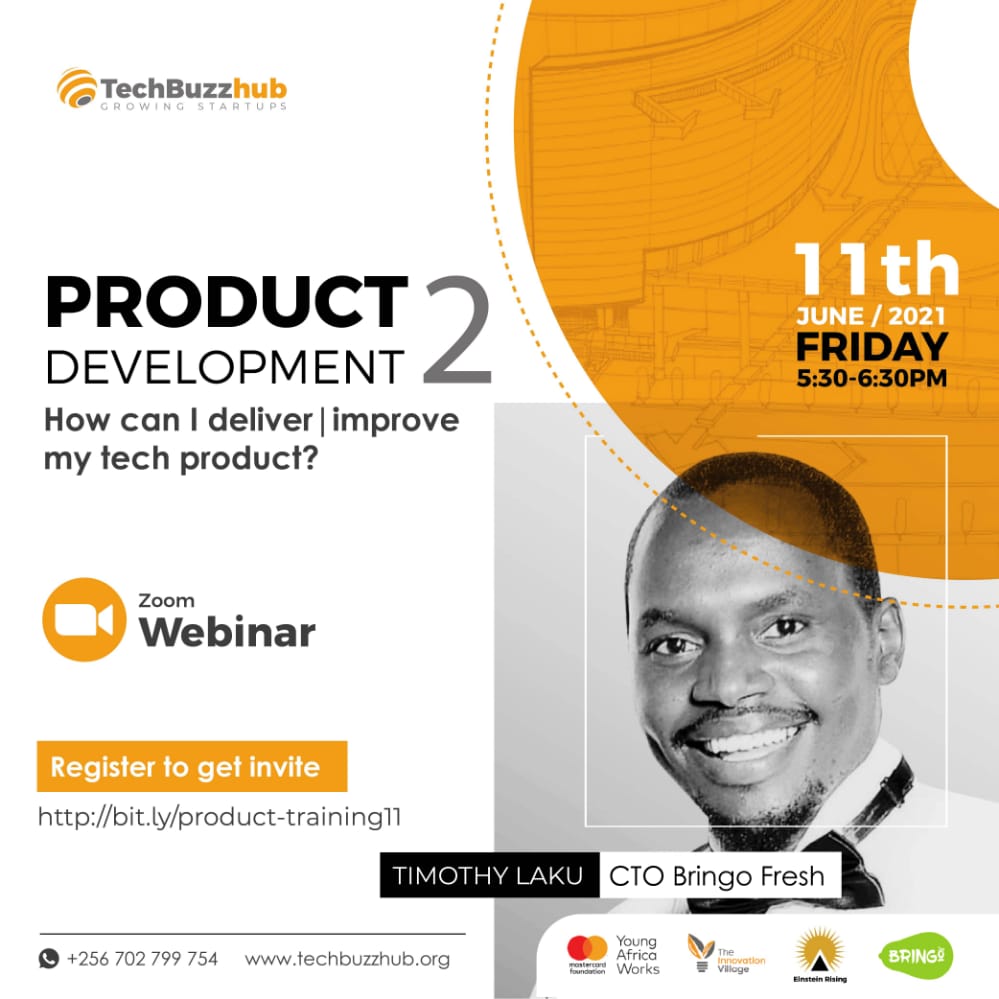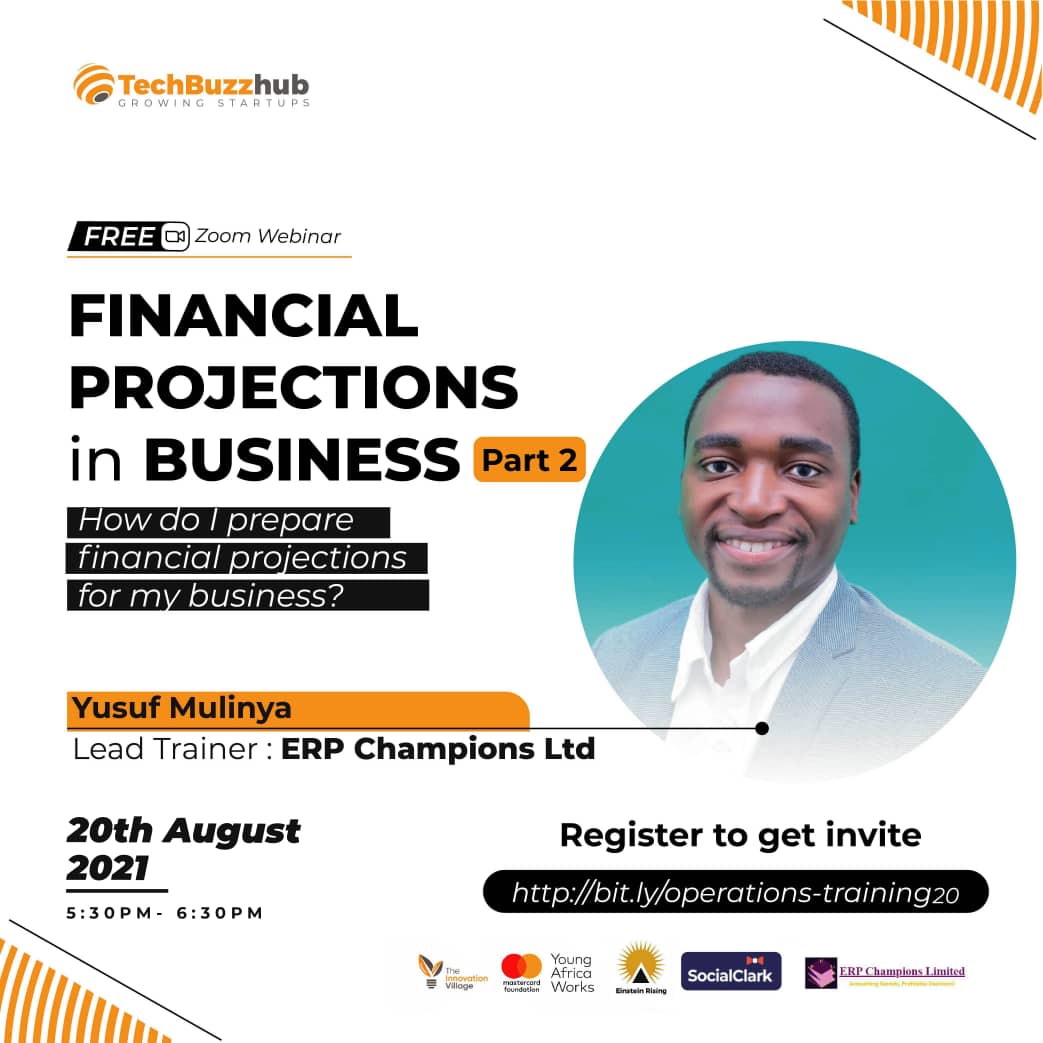PRODUCT DEVELOPMENT 2 – TRAINING
HOW CAN I DELIVER/ IMPROVE MY TECH PRODUCT?
From the webinar series we present to you the other part of product development. The previous article was about product development 1 which was generally dealing with the consumables and all products on general. This time round we specifically want to understand what turn it would take for the product that was basically tech related. Today the world has changed so drastically and some things are soon fading off, easier technological products are being introduced in the market. New innovators are cooking their minds round the globe to make life easier. Its referred to as the forth phase/ generational industrial revolution. As a startup, in a third world country such as Uganda, you are probably seeking to join that eco system become a product owner, or developer and you don’t know where to start from. May be you have started and you are stuck at some point, your product has failed. Timothy Laku, the Chief Technology Officer at Global Technology Advisor and Bringo Fresh is here to inspire and give you a push.
Why does technology matter anyway?
According to him (Timothy), the world has grown and changed a lot. It no longer those early times when people were getting introduced to machines and iron instead of the ordinary manual labor. Today the global village lives in the 4th generational industrial revolution where everything revolves around software and computers for data collection, the smart products, like watches, phones, television sets, pads among others. It’s the reality you need to stay within, because like it or not it affects your daily existence.
How do I become a better product owner?
It all starts from the kind of problem you are seeking to solve, where exactly is your focus? For example, while looking at the challenges that a student in Uganda is undergoing to study and access academic resources during the pandemic ad lockdown and seeking to solve it through technology where do you set your focus. Many people look at the small Kampala, and Uganda. which is wrong look at it as a global problem that even the same student in Asia/ japan is facing and solve or look for a solution from that angle. This will give you a better approach.
Obviously if you don’t see it that way then you might be solving a wrong problem in this 4th generational industrial revolution. The litmus test for me(timothy) is the way you approach the problem you are trying to solve.
How do you build an amazing product today?
There are several steps involved, I would draw your attention to only 5 steps.
Step 1; you need to know where you are as a product owner. A product owner is not necessarily the person who designs the product. It’s the person who owns the idea. So a product owner may arise from any filed of life, could be business, graphics and design, web/software designer among others. However, where does this product designer belong. In a tricycle kind of elaboration. He falls in the intersection of the design, business or technology dimensions of life or any other, the key word is the intersection. Not only one of the others or else he shall face allot of challenges with his product in the market.
Step 2; there are 8 rules to building a great tech product. These include the following.
- Knowledge of your customer. You must know who your customer is and know him or her pretty well. This will help you build what will be relevant to his challenges at the moment. “don’t sell ice to an Eskimo”
- You have to understand your customer. Your target customer very well. Like you have to sell a size 8 shoe to a size 8 foot. not less not more. Same applies to tech products. Understand your customer. Lack of clarity of your customer details results into product failure in the market.
- You must match the features of your tech product with what the customers want, and need at that particular point in time. “a patient needs medication not a trip to Dubai.”
- How do you get your clients and customers access your platforms and products? You must clearly show how the customer and consumer of your product can access your platform. If they are used to calling you then you need not involve the product on social media. If they are farmers then social media to them is irrelevant, but community Sacco’s would do better.in other wards perfect your user on boarding journey. You rather spend all the little money and time you have perfecting this, otherwise you might have wasted your time on the tech product.
- First presentation always matters. When It comes to consumer interface do not cut corners give it your best. It is what shall literally sale the product to the consumer.
- Admin screens are like your pajamas, very few people will look at it. So do not devote a lot of effort and resources to it yet. Rather spend it on your client screen.
- Solid tech architecture is your foundation, so invest in your product foundation as much as possible. The thing is you fail on the architecture part of your product you as well have not built any product, for it will fail.
- Finally, complex workflows are like electrical wiring.
Step 3; is the question of whether to outsource your team or to insource your team? Usually comes at a time when the product is being developed. The product owner either outsources the team or insources the team to work on the product. The product owner is faced with this question and decision to make. It has pros and cons for sure. But it also depends so much on the kind of product concept you are developing and the money involved in developing this product. Outsourcing for example could be expensive but usually takes a shorter period of time to have the product ready, insourcing may be cheaper but takes a longer period of time for maturity and more expensive when it comes to resources.
Step 4; there are seven easy steps to formulate an effective GTM strategy. (get to market)
- What is your target market? You must know your target market. It must be clearly mapped out. Are they youth, farmers, bankers, students etc.
- What / who are your target customers? You must understand clearly who your customer is for the product you have developed otherwise it shall be a flop in the market.
- What are you offering? Knowledge of what you are bringing into the market is key, its advantages over the eco system you are entering, disadvantages among others.
- What are your channels? Simply refers to how you shall access your customers and how they shall access the product easily. Is it through social media, show room, internet, reaching out to clients physically? Not ever channel is suitable to every set of consumers and the product itself.
- How will you build your budget? Understanding how much you need to raise fot the whole process is also very important, getting to know where to inject more resources.
- What is your marketing strategy? What marketing strategy are you going to use in order ot get the traction you need to your product.
Step 5; this stage is all about your mindset as a product owner. How best do you try to build a product? Always ensure that the product you introduce in the market is able to solve the consumer’s immediate problem, slowly by slowly, one at a time, every stage of your product development should be able to address the consumer’s problem to a given degree not until you reach your desired dream and high-tech product.
You only achieve this by listening to your customers. Thank you for this effort and we hope that you are enriched more form this article. Many of the words herein were not quoted in verbatim those who wish to have access to the webinar please feel free to follow the link. Follow us on the nest webinar about managing your personal finances till next time.






